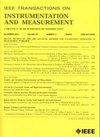T2MFDF:一种集成时间序列和文本数据的llm增强多模态故障诊断框架
IF 5.9
2区 工程技术
Q1 ENGINEERING, ELECTRICAL & ELECTRONIC
IEEE Transactions on Instrumentation and Measurement
Pub Date : 2025-06-26
DOI:10.1109/TIM.2025.3583374
引用次数: 0
摘要
在现代工业应用中,准确的故障诊断是确保机械可靠性的关键,然而传统的方法与故障的复杂性和相互依赖性相斗争,特别是在轴承系统中。本文提出了一种新的多模态故障诊断框架,该框架将时间序列振动信号与文本描述相结合,利用基于bert的大语言模型(LLM)来增强特征表示和捕获故障类别之间的语义关系。通过利用LLM,该模型提高了不同故障场景的泛化能力,解决了以前模型的局限性。该框架引入了多模态数据增强模块,增强了特征多样性,丰富了复杂故障模式的表达。此外,利用大型多模态模型,通过集成来自时间序列数据的顺序模式和来自文本描述的上下文信息,可以更好地处理故障分类。文本模态使用由诊断特征通知的模板构建,允许LLM提取与特定故障特征一致的语义上有意义的表示。实验结果证明了多模态方法的优越性,与单模态方法相比,该方法在ACC和$F1$ -score上分别提高了32.647%和35.5%。在可转移性评价中,模型的Tr-ACC达到了92.295%,证明了模型的鲁棒性和对未知数据集的适应性。在工业轴承数据集上进行的大量实验验证了所提出框架的有效性,该框架优于传统模型,并突出了其在实际应用中的潜力。本文章由计算机程序翻译,如有差异,请以英文原文为准。
T2MFDF: An LLM-Enhanced Multimodal Fault Diagnosis Framework Integrating Time-Series and Textual Data
In modern industrial applications, accurate fault diagnosis is critical for ensuring machinery reliability, yet traditional methods struggle with the complexity and interdependencies of faults, particularly in bearing systems. This article proposes a novel multimodal fault diagnosis framework that integrates time-series vibration signals with textual descriptions, leveraging a BERT-based large language model (LLM) to enhance feature representation and capture semantic relationships between fault categories. By utilizing LLM, the model improves generalization across diverse fault scenarios, addressing the limitations of previous models. The proposed framework incorporates a multimodal data augmentation module, which enhances feature diversity and enriches the representation of complex fault patterns. Furthermore, leveraging large multimodal models facilitates better handling of fault classification by integrating both sequential patterns from time-series data and contextual information from textual descriptions. The textual modality is constructed using templates informed by diagnostic features, allowing the LLM to extract semantically meaningful representations aligned with specific fault characteristics. Experimental results demonstrate the superiority of the proposed multimodal approach, which achieves maximum improvements of 32.647% in ACC and 35.5% in $F1$ -score compared to unimodal methods. In the transferability evaluation, the model achieves a Tr-ACC of 92.295%, demonstrating its robustness and adaptability to unseen datasets. Extensive experiments on industrial-bearing datasets validate the effectiveness of the proposed framework, which outperforms traditional models and highlights its potential for real-world applications.
求助全文
通过发布文献求助,成功后即可免费获取论文全文。
去求助
来源期刊

IEEE Transactions on Instrumentation and Measurement
工程技术-工程:电子与电气
CiteScore
9.00
自引率
23.20%
发文量
1294
审稿时长
3.9 months
期刊介绍:
Papers are sought that address innovative solutions to the development and use of electrical and electronic instruments and equipment to measure, monitor and/or record physical phenomena for the purpose of advancing measurement science, methods, functionality and applications. The scope of these papers may encompass: (1) theory, methodology, and practice of measurement; (2) design, development and evaluation of instrumentation and measurement systems and components used in generating, acquiring, conditioning and processing signals; (3) analysis, representation, display, and preservation of the information obtained from a set of measurements; and (4) scientific and technical support to establishment and maintenance of technical standards in the field of Instrumentation and Measurement.
 求助内容:
求助内容: 应助结果提醒方式:
应助结果提醒方式:


